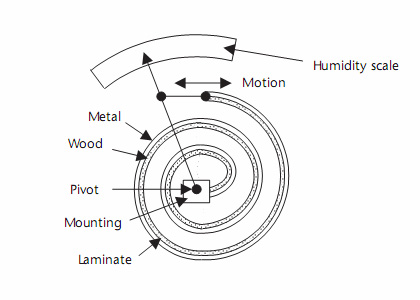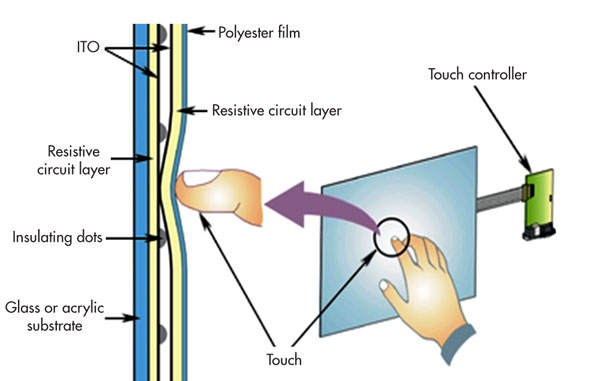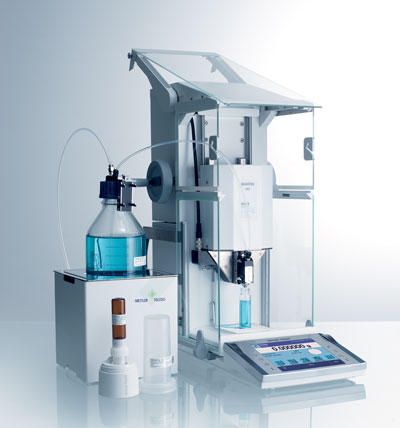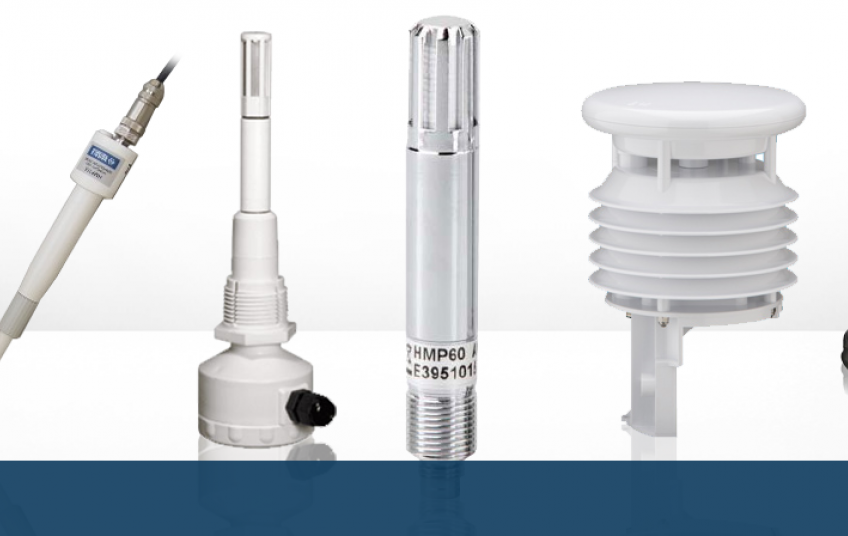Across sectors, whether in manufacturing, pharmaceuticals, technology, agriculture, or other fields – monitoring and controlling environmental conditions is vital. Humidity is one such environmental condition for which controls are sought and sensing technology is continually being advanced.
Humidity is a measure of the presence of water vapor in an air or gas. The amount of water vapor present or absorbed is dependent on the temperature of the air. Warm or higher temperature air can hold more moisture and cold air less. The percentage of water vapor in an air or gas, compared to the maximum amount that can be absorbed at a given temperature is referred to as the relative humidity.
This humidity level, or relative humidity, can be measured using either a psychrometer or a hygrometer. Psychrometers consist of two thermometers attached to a frame, one with a wet-bulb and the other with a dry-bulb. Sling psychrometers have a handle, allowing the instrument to be rotated or swung so that air passes over both bulbs. Aspirating psychrometers are usually battery powered and use a fan to circulate air over the wet bulb. In both cases, the dry bulb measures the temperature of the surrounding air. The wet bulb, depending on the amount of water already in the air, loses water through evaporation,decreasing the temperature of the bulb until equilibrium with the surrounding air is reached. The immediate temperature readings from wet and dry bulb are used to determine the relative humidity by means of a psychrometric chart. If the air is fully saturated, the two thermometers coincide – and no evaporation or cooling of the wet bulb occurs. However, if the air is dry, water is absorbed from the bulb into the air, cooling the bulb temperature so that the temperature difference between wet and dry bulb is greater, the dryer the air.
While a psychrometer uses temperature as a way of measuring relative humidity, a hygrometer utilizes a humidity sensor that relies on pressure, mass, or a mechanical or electrical change to for humidity measurements. Hair tension and metal-paper coil hygrometers are mechanical hygrometers that take advantage of the tendency of air to retain moisture, and salt-impregnated paper to absorb water vapor. The absorption properties of these materials act as mechanical sensors, causing a dial or coil to move and generate a relative humidity reading. In contrast, chilled mirror dew-point hygrometers utilize a constant vapor pressure to identify the temperature at which water vapor in air or gas condenses to a liquid, and then uses that to formulate a humidity reading.
Hygrometers are also characterized by whether the type of sensor they have. Capacitors consist of a non-conductive polymer material between two conductive metal plates. As the polymer absorbs and releases moisture, charge is either built up or reduced in an electric field called a dielectric. The absorption and release of water is measured by an electronic circuit and is proportional to the relative environmental humidity. In contrast, resistive hygrometers consist of conductive polymers or salts and utilize the variation in ionic conductivity as a function of relative humidity. As humidity decreases, the salt concentration increases, causing an increase in electric current. Resistive hygrometers measure electrical resistance. Additionally, resistive type hygrometers have material properties that depend on humidity and temperature. Consequently, their sensors must be combined with temperature sensors to monitor accuracy. Thermal hygrometers measure the effect of humidity on thermal conductivity or the heat conduction of air. As humidity increases, the thermal conductivity of air decreases. The measured change in thermal conductivity of the air or gas, as heat is applied, is used to calculate absolute humidity versus relative humidity. Gravimetric hygrometers compare the mass of an air or gas sample to an equal sample (volume) of dry air or gas.
The application of humidity sensing instruments is broad. However, each possesses characteristics that make its use ideal in certain circumstances and not in others. See Table 1 for images and unique characteristics of humidity sensors.
Table 1- Humidity Sensors
Psychrometers
Great for measuring outdoor humidity and moisture in museums. Cannot be used in temperatures below freezing. Also does not measure accurately below 20% RH.

Metal-paper coil type hygrometers
Used in very inexpensive devices to monitor moisture where absolute accuracy not needed.

Chilled Mirror Dew Point
Used in delicate scientific research where small traces of moisture need detecting.

Capacititive
Low Cost, Small Durable. Used for environments where temperature fluctuates frequently.

Resistive
Less practical for small humidity changes.

Gravimetric
Highly accurate and expensive. Generally used to set standards across countries. Used to calibrate less accurate hygrometers.

Hair tension hygrometers
Good for finding excess moisture pockets that could produce bacteria or mold growth.

References
Chen, Z. & Lu C. Humidity Sensors: A Review of Materials and Mechanisms. Sensor Letters. 2005. 3 274-295.
Distefano, D. (2016, September 8). What is a Humidity Chart? Retrieved October 14, 2016 from [http://www.wisegeek.com/what-is-a-humidity-chart.htm]
Huda, N. Md. (2015). Hygrometers. Retrieved October 18, 2016 from [http://www.slideshare.net/MdNazmulHuda4/hygrometers?qid=c05287a8-0641-475a-85e9-d11ef6f746cd&v=&b=&from_search=1]
Hygrometer.net. (n.d.). Types of Hygrometers for Multiple Uses. Retrieved October 20, 2016 from [http://hygrometer.net/types-hygrometers-multiple-uses/]
Nickolaisen, M. (2016, September 8). What are the Best Ways to Determine Humidity Level? Retrieved October 14, 2016 from [http://www.wisegeek.com/what-are-the-best-ways-to-determine-humidity-level.htm]
Pelino, M., Cantalini, C., Faccio, M. Principles and Applications of Ceramic Humidity Sensors. Active and Passive Electronic Components. 1994. 16 69-87.
Petersen, C. (2016, September 13). What is a Humidity Table? Retrieved October 14, 2016 from [http://www.wisegeek.com/what-is-a-humidity-table.htm]
Thomson, G. (1993). Using a Psychrometer to Measure Relative Humidity. Conserve O Gram 3 (1) 4.
Wikipedia1. (2016, August 31). Dielectric. Retrieved October 16, 2016 from [https://en.wikipedia.org/w/index.php?title=Special:CiteThisPage&page=Dielectric&id=737035118]
Wikipedia2. (2016, September 27). Capacitor. Retrieved October 16, 2016 from [https://en.wikipedia.org/w/index.php?title=Special:CiteThisPage&page=Capacitor&id=741423124]
Wikipedia3. (2016, September 15). Hygrometer. Retrieved October 18, 2016 from [https://en.wikipedia.org/wiki/Hygrometer]
WiseGeek1. (n.d.). Relative Humidity Chart. Retrieved October 14, 2016 from [http://topics.wisegeek.com/topics.htm?relative-humidity-chart#]
Yankee Environmental Systems, Inc. Hygrometer: Principle of Operation Chilled Mirror Hygrometers. Retrieved October 18, 2016 from [http://www.yesinc.com/products/data/cmh/]


































